
The betta fish, also known as the Siamese fighting fish, is a freshwater fish from Southeast Asia. It can measure up to 2 inches in length and can live up to 3 years.
It is widely coveted due to their spectacular fins and bright colors. However, many people get them without knowing which fish are compatible with the betta fish. These fish are very sensitive to change and don't adapt to all tank mates. This is the reason why it's very important to know which fish they gets along with.
Coexistence with Bettas
As previously mentioned, betta fish are also known as Siamese fighting fish. This is not a coincidence. Betta fish are known for their ability to be very aggressive. This feature is seen more in male Betta fish, who are very territorial with other males of the same species. However, female betta fish are willing to share the same environment.
The water in a betta fish's tank should be kept between 75 to 86 Fahrenheit. It is better to use tap water because they are better kept in pH acidic water. That being said, the first step is having a tank mate with the same requirements. Another important factor is the size of the tank itself. The more fish you try to combine in the same tank, the bigger the tank will need to be. This is especially true for betta fish as they are naturally territorial.
If you're going to have three or four fish together, a tank of 10 - 15 gallons will suffice. However, if you want to create a wider community, you'll need a tank of at least 30 gallons of water in order to avoid possible clashes. Vegetation and other places where fish can hide will also be essential for their well being.
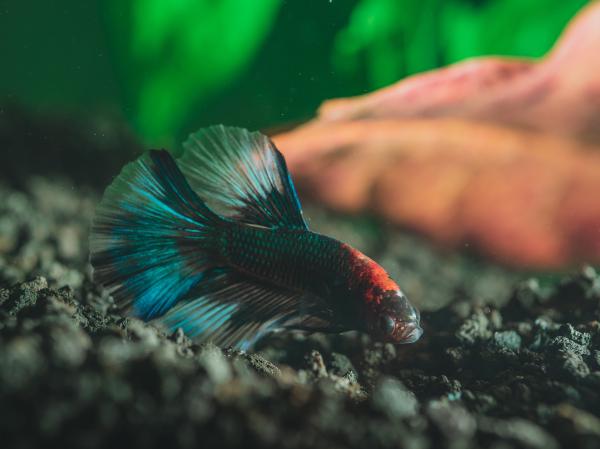
Incompatible tank mates with bettas
It's important to know the type of fish which don't get on well with betta so that you can avoid them at all times. Under no circumstances do bettas get on with the following fish:
- Brightly colored fish with large fins
- Fish with a nervous disposition
- Territorial and aggressive fish
- Fish that occupy the top of the tank
- Predatory fish, such as as freshwater Moray eels
- Reptiles and amphibians, with the exception of some frogs
- Slow-moving fish
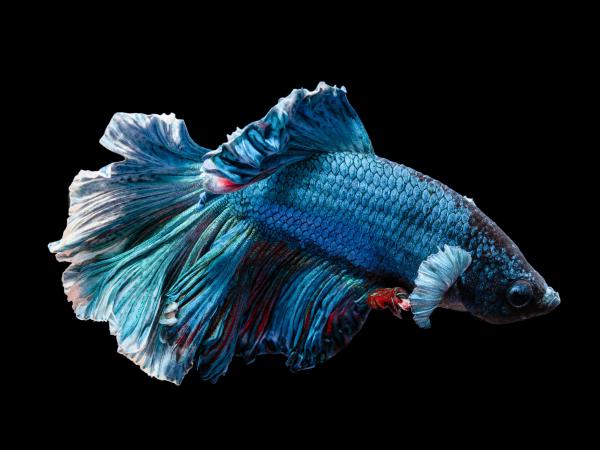
Compatible tank mates with Bettas
Now you know this specie's basic rules of cohabitation and you know the fish with whom they don't get along with. Therefore, now you can complete your tank with fish that are compatible with the betta fish:
- Bottom dwellers, such as Algae eaters or Ancistrus
- Passive fish, such as the Hemigrammus Rhodostomus
- Invertebrate species, such as freshwater mussels or snails
- Calm fish, such as like Corydoras or Kuhlii
- Colonies of live food which will feed the betta, such as Daphnia
- Female betta
Several females can get along with a male. In addition, by doing so you will also facilitate the breeding of betta fish.
Remember that whichever breed you choose, they are new companions for your betta. This means that they should all be comfortable and well adapted to their new habitat. It is recommended to make an effort to get to know the attitude of each species before getting them and adding them to the aquatic family.
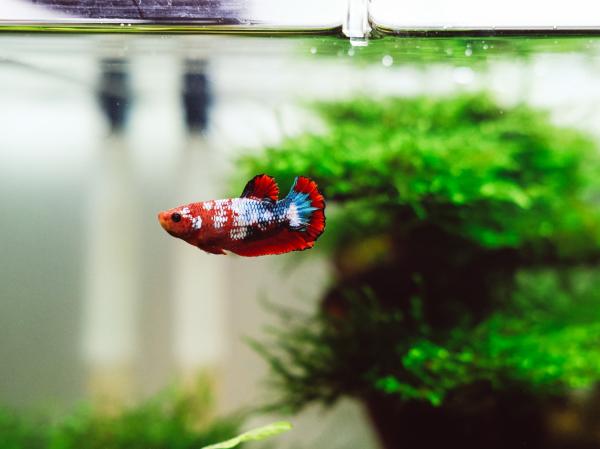
Complete compatible fish list
Betta fish are one of the most popular freshwater fish, especially for beginners. Although it is commonly thought that bettas must live alone, this is simply not true. Wild bettas are confronted with many types of fish in their environment, such as the Harlequien Rosboras. This is something we should try to replicate when creating a community tank because it will bring a balance to their life and help their overall well-being. That being said, it is very tricky finding compatible fish for your betta due to their aggressive and territorial behavior. Thanks to this AnimalWised article, the process of choosing tank mates for your betta fish has never been easier.
We have included a large list of compatible fish below. Don't forget to research what these fish eat and learn more about their needs. Monitor your community tank for at least 3 days after introducing new fish. This will make sure that everything is going well and allow you to take action if a problem arises.
- Albino cory
- Black Line rasbora
- Black Neon tetra
- Blue tetra
- Bristlenose pleco
- Candy striped pleco
- Cardinal tetra
- Celestial pearl danio
- Cherry barbs (only with female betta)
- Clown loach
- Clown pleco
- Colombian tetra
- Cory catfish
- Dawn tetra
- Diamond tetra
- Ember tetra
- Endlers
- Fire rasbora
- Glass catfish
- Glowlight tetra
- Gold tetra
- Guntea loach
- Guppies
- Harlequin rasbora
- Head and tail light tetra
- Kuhli loaches
- Mosquito rasbora
- Neon tetra
- Otocinclus catfish
- Panda cory
- Penguin tetra
- Platy (short-finned)
- Pleco fish
- Pygmy cory
- Red eye tetra
- Rummy-nose tetra
- Short-fin molly
- Silver tip tetra
- Snowball pleco
- Sororities (only with female betta)
- Yoyo loach
- Zebra loach
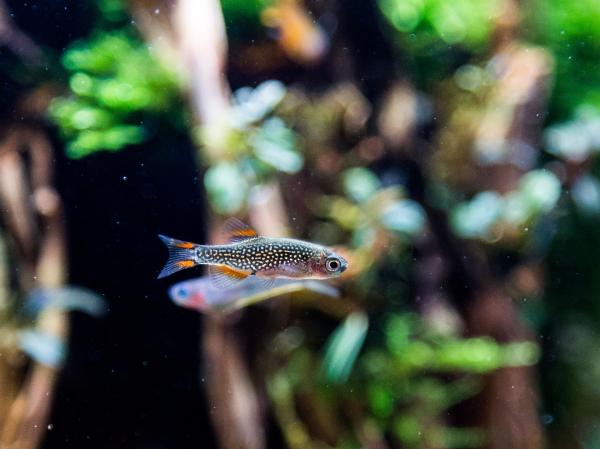
Snails compatible with betta fish
If you're looking for something a little different to keep your betta fish company, these suggestions are for you. They can definitely add a different dynamic to your community tank. Freshwater snails require the same environment as betta fish. They mostly feed off of algae and uneaten food. Learn more in our article about what food to feed your snails. Most aquarists enjoy having them in their tank because not only are they peaceful and enjoyable to watch, but they also help keeping the tank clean.
- Zebra snail
- Nerite snail
- Mystery snail
- Malaysian trumpet snail
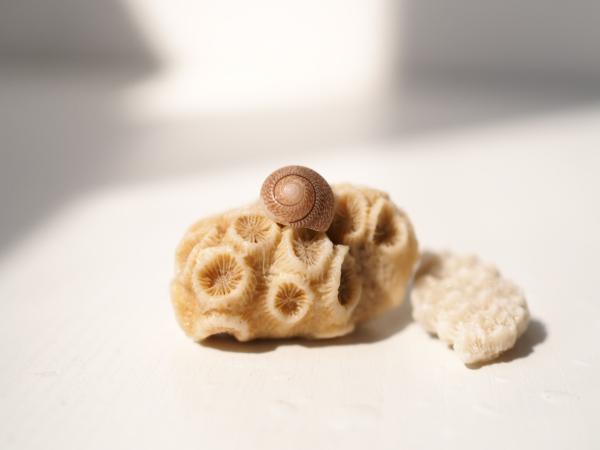
Shrimp compatible with betta fish
Shrimp are another great alternative. Ghost shrimps also get along very well with freshwater snails as they are very peaceful. Shrimps are very cheap, easy to maintain and help promote a healthy tank. Ghost shrimps in particular, scour the bottom of the tank, eating scraps of food left behind. These Shrimps are recommended to be kept in a group of at least five.
- Ghost shrimp
- Adult cherry shrimp

Frogs compatible with betta fish
African Dwarf Frogs enjoy the same environment as a betta fish. They are well-behaved and easy to care for. They're also quite small, as they grow up to 3 inches. However, the trickiest part of caring for this frog is their diet. African Dwarf Frogs require meaty food such as shrimp and blood worms. This implies that it will take a bit more work and money to care for them. Nevertheless, they make great betta tank mates that will catch anyone's eye when they observe your community tank.
- African dwarf frogs
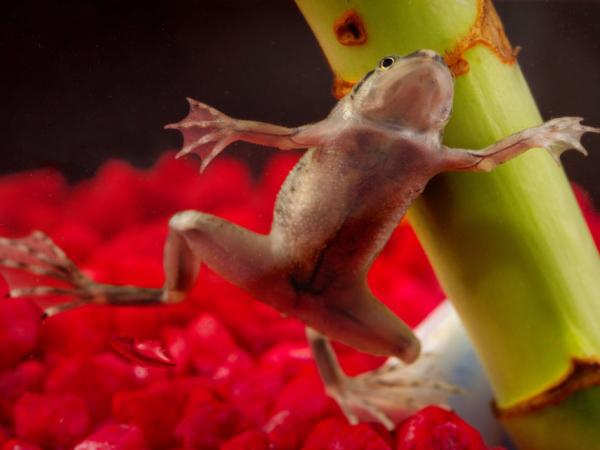
Living plants for betta fish
As we've previously mentioned, it is very important to decorate and place living plants in your community tank as it will aid in their environmental enrichment. Creating physical and social stimulation in their surroundings has been shown to help improve their quality of life and even help recover from physical or mental dysfunctions. Live plants also produce oxygen (O2) and absorb the carbon dioxide (CO2) and ammonia (NH3) that your fish generate. They also create food, such as algae and protozoa, for some of your aquatic animals. Other reasons for having live plants in your aquarium is so your fish have hiding areas where they can feel protected, and the fact that fish are more inclined to reproduce in tanks with appropriate settings. Some beginner-friendly live plants you can consider are:
- Marimo moss ball
- Java moss
- Java fern
- Hornort
- Water wisteria
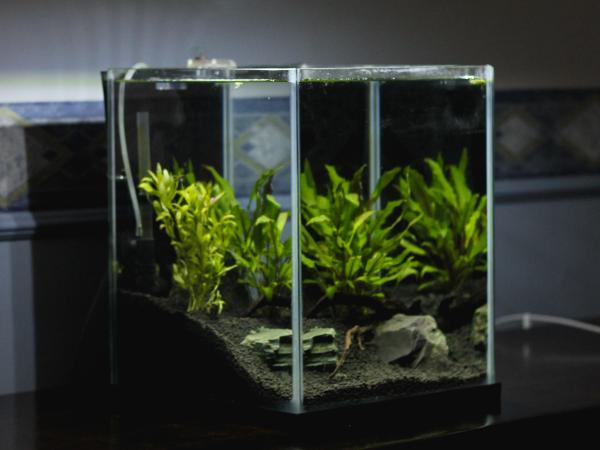
If you want to read similar articles to 50+ Compatible Tank Mates for Betta Fish, we recommend you visit our What you need to know category.
- Bettas are aggressive, territorial and unpredictive, so it's best to monitor their behavior
- Provide hiding spots, vegetation and decoration
- Make sure to research what each fish eats to provide the correct diet
- Avoid tank mates with bright colors and long fins
- Monitor new tank mates for at least 3 days to ensure they're well adjusted
- It is recommended to add a betta fish to a previously established community tank
- Select the correct size tank for the amount of fish in your community
- The Times. (2016). Benefits of Live Plants in a Home Aquarium. Retrieved on February 26, 2020, from
https://www.timesonline.com/15269cbc-706d-11e6-bfe6-83d31b488d8f.html
- Näslund, J. (2014). Environmental Enrichment For Fish in Captive Environments: Effects of Physical Structures and Substrates. In John Wiley & Sons, Fish and Fisheries (1-30). Swedish Research Council Formas. https://doi.org/10.1111/faf.12088